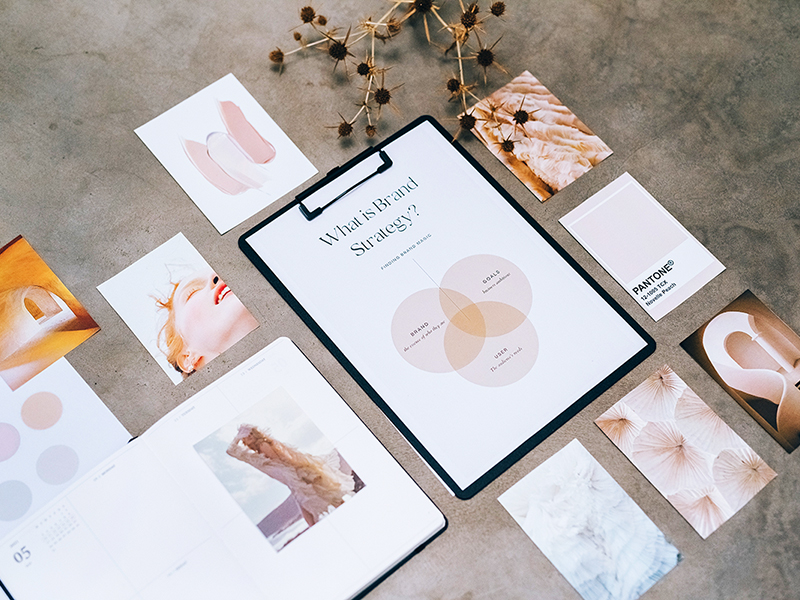As a content marketer, I love using visuals strategically in my content marketing. Visual content is my jam.
Why?
In short, impact.
Given today’s fast and frenzied pace, the right visuals break through all the noise and convey an immediate message. A picture tells a story not just in a thousand words but lightning fast. Visual content grabs attention in a way that written content alone cannot. Our brains simply process visual content much faster than words.
As a busy small business owner, you may not have given much thought to the impact strong visual content has on audience engagement. As a content marketer, I cannot emphasize it enough. Visual content is easily digestible. It has the unique ability to simplify a complex concept and make it understood quickly.
That’s one of the reasons I place a great deal of emphasis on visual content when working with clients. We are telling a brand story – and no other brand can tell your exact story. Using well-crafted visual content in content marketing brings in an audience more quickly and effectively.
At times, a strong image can stand alone with no textual content. At other times, combining both written content and visuals outperforms either alone. It really depends on the message. The point is that there are many creative ways to integrate the two mediums.
If you want to up your brand game with visual content, my four recommendations as a content marketer will help to get you there faster.
Tips for Creating Engaging Visual Content
Know Your Audience
Take the time to really define your target audience demographics and align your visual content to resonate with their specific interests and preferences. Monitor who follows you on social media and search for characteristics, like age, location, and interests. You can then use that defined demographic information to target new audience interest.
Tell Your Brand Story
Craft compelling stories around your brand that connect you to your audience on an emotional level, then use visual content to enhance the story. Narratives that align with your brand’s values build trust and let your audience feel they’ve gotten to know your brand a little better. This is one of the best ways to build brand loyalty.
Ensure Brand Cohesiveness
Be sure that your branding is true to type across all platforms. Consistency in visual content is vital for building a recognizable and cohesive brand identity. The visual content that you use in your marketing should reflect your brand’s look and messaging. Integrate elements like colors, fonts, and graphic styles to reinforce your unique brand message and create a cohesive experience across channels. Visual consistency is one of the key elements that will differentiate you from other brands.
Optimize for Different Platforms
It’s important to adapt your visual content to each specific platform. Take the time to optimize your visuals for size and format. Research each platform’s preferred image dimension size, then edit images specifically to ensure all visual content displays optimally. Any missing part of visual content can impact how the story conveys and affect your brand’s credibility. For example, no one wants to see part of an object missing in an image that is referred to in the caption of the post.
Using Visual Media in Content Marketing
Images and Photos
As I’ve highlighted above, high-quality images and photographs get your audience’s attention quickly, evoke emotions, tell stories, and convey messages in profound ways. Always use high-resolution images, and they can usually be in either JPG or PNG format.
Videos
In recent years, videos have catapulted in social media platforms as the top content form. Short-form videos can tell stories, demonstrate products or services, provide tutorials, and create immersive brand experiences. Many smartphones have high-quality video capability today, and video editing applications are widely available online, making usage of video highly accessible to most brands. Using video in content marketing can be a very smart move for increasing brand awareness.
Memes and GIFs
This kind of humorous content is generally very relatable and has gained significant popularity on social media platforms. Short, comical snippets add humor and personality to your brand. For most content marketing, memes and GIFs should be used appropriately and sparingly.
Infographics
Infographics combine information and visual elements to convey complex data in an easily digestible way. Not every business has a need for this type of visual medium. If your brand uses data, including infographics in your content marketing is a great way to communicate these concepts to your audience.
The Importance of Visual Content in Marketing
Visual content marketing is one of the most important tools I use in my content marketing arsenal. Because visuals communicate ideas faster and easier, incorporating visuals in content marketing is a powerful way to build audience engagement and ensure your target audience remembers your brand message.
I recommend keeping your brand messaging strong and consistent. But varying visual mediums in your content marketing will help to keep audiences interested while you continue to tell your brand story.

